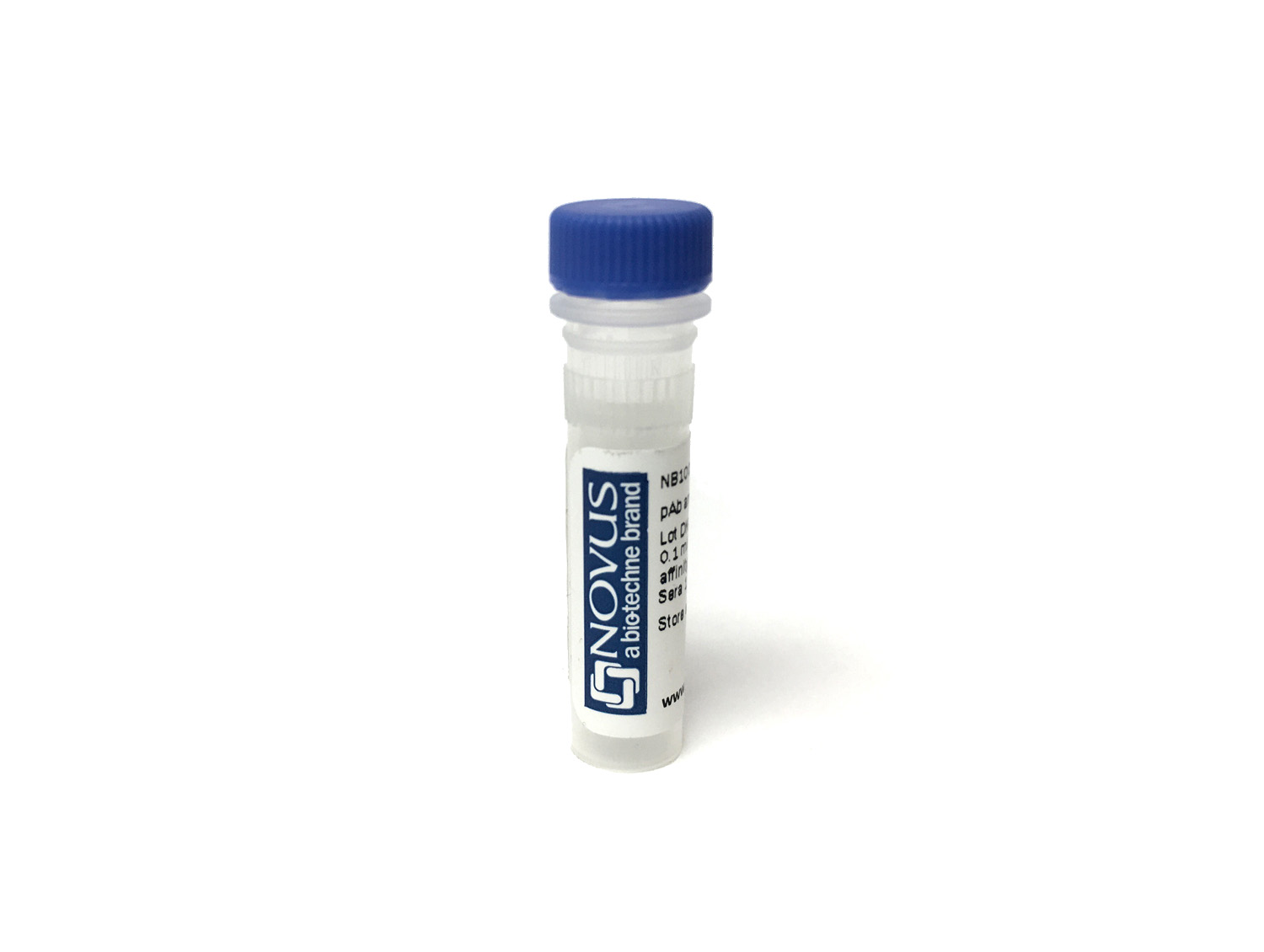BromoTag Products
BromoTag is a novel TAG degradation platform designed to degrade intracellular proteins of interest. The BromoTag system requires the target protein to be expressed as a fusion protein with a TAG protein, called a degron tag. The BromoTag consists of a bromo and extracellular terminal (BET) bromodomain Brd4 variant L387A as the degron tag. The tag mediates formation of a tertiary complex between the von Hippel Lindau (VHL) E3 ligase and the fusion protein. The fusion protein becomes ubiquitinated by the E3 ligase, leading to proteasomal degradation of the target protein and degrader BromoTag recycling. An advantage of this system is that the degron tag removes the requirement for proteolysis targeting chimeras (PROTACs) or binding ligands for the protein of interest to recruit the E3 ubiquitin ligase. Degradation by BromoTag is an alternative strategy compared to conventional genetic knockout or knockdown. Additionally, the dosage can be modified to control the level of protein degradation and knockdown. The Bromotag system is also reversible, where in cell culture conditions the degrader can be washed out from the media.
BromoTag(R) is a registered trademark of the University of Dundee and is used under license.
References
Bond AG, Craigon C, Chan KH, et al. Development of BromoTag: A "Bump-and-Hole"-PROTAC System to Induce Potent, Rapid, and Selective Degradation of Tagged Target Proteins. J Med Chem. 2021;64(20):15477-15502. https://doi.org/10.1021/acs.jmedchem.1c01532
Show More
BromoTag(R) is a registered trademark of the University of Dundee and is used under license.
References
Bond AG, Craigon C, Chan KH, et al. Development of BromoTag: A "Bump-and-Hole"-PROTAC System to Induce Potent, Rapid, and Selective Degradation of Tagged Target Proteins. J Med Chem. 2021;64(20):15477-15502. https://doi.org/10.1021/acs.jmedchem.1c01532
28 results for "BromoTag" in Products
Search
Application
Conjugates
Clonality
Host Species
Sample Size
Brand
BromoTag Products
BromoTag is a novel TAG degradation platform designed to degrade intracellular proteins of interest. The BromoTag system requires the target protein to be expressed as a fusion protein with a TAG protein, called a degron tag. The BromoTag consists of a bromo and extracellular terminal (BET) bromodomain Brd4 variant L387A as the degron tag. The tag mediates formation of a tertiary complex between the von Hippel Lindau (VHL) E3 ligase and the fusion protein. The fusion protein becomes ubiquitinated by the E3 ligase, leading to proteasomal degradation of the target protein and degrader BromoTag recycling. An advantage of this system is that the degron tag removes the requirement for proteolysis targeting chimeras (PROTACs) or binding ligands for the protein of interest to recruit the E3 ubiquitin ligase. Degradation by BromoTag is an alternative strategy compared to conventional genetic knockout or knockdown. Additionally, the dosage can be modified to control the level of protein degradation and knockdown. The Bromotag system is also reversible, where in cell culture conditions the degrader can be washed out from the media.
BromoTag(R) is a registered trademark of the University of Dundee and is used under license.
References
Bond AG, Craigon C, Chan KH, et al. Development of BromoTag: A "Bump-and-Hole"-PROTAC System to Induce Potent, Rapid, and Selective Degradation of Tagged Target Proteins. J Med Chem. 2021;64(20):15477-15502. https://doi.org/10.1021/acs.jmedchem.1c01532
Show More
BromoTag(R) is a registered trademark of the University of Dundee and is used under license.
References
Bond AG, Craigon C, Chan KH, et al. Development of BromoTag: A "Bump-and-Hole"-PROTAC System to Induce Potent, Rapid, and Selective Degradation of Tagged Target Proteins. J Med Chem. 2021;64(20):15477-15502. https://doi.org/10.1021/acs.jmedchem.1c01532
28 results for "BromoTag" in Products
| Reactivity: | Human, Non-species specific |
| Details: | Sheep Polyclonal |
| Applications: | WB |
| Reactivity: | Non-species specific |
| Details: | Sheep Polyclonal |
| Applications: | WB |
| Reactivity: | Non-species specific |
| Details: | Sheep Polyclonal |
| Applications: | WB |
| Reactivity: | Non-species specific |
| Details: | Sheep Polyclonal |
| Applications: | WB |
| Reactivity: | Non-species specific |
| Details: | Sheep Polyclonal |
| Applications: | WB |
| Reactivity: | Non-species specific |
| Details: | Sheep Polyclonal |
| Applications: | WB |
| Reactivity: | Non-species specific |
| Details: | Sheep Polyclonal |
| Applications: | WB |
| Reactivity: | Non-species specific |
| Details: | Sheep Polyclonal |
| Applications: | WB |
| Reactivity: | Non-species specific |
| Details: | Sheep Polyclonal |
| Applications: | WB |
| Reactivity: | Non-species specific |
| Details: | Sheep Polyclonal |
| Applications: | WB |
| Reactivity: | Non-species specific |
| Details: | Sheep Polyclonal |
| Applications: | WB |
| Reactivity: | Non-species specific |
| Details: | Sheep Polyclonal |
| Applications: | WB |
| Reactivity: | Non-species specific |
| Details: | Sheep Polyclonal |
| Applications: | WB |
| Reactivity: | Non-species specific |
| Details: | Sheep Polyclonal |
| Applications: | WB |
| Reactivity: | Non-species specific |
| Details: | Sheep Polyclonal |
| Applications: | WB |
| Reactivity: | Non-species specific |
| Details: | Sheep Polyclonal |
| Applications: | WB |
| Reactivity: | Non-species specific |
| Details: | Sheep Polyclonal |
| Applications: | WB |
| Reactivity: | Non-species specific |
| Details: | Sheep Polyclonal |
| Applications: | WB |
| Reactivity: | Non-species specific |
| Details: | Sheep Polyclonal |
| Applications: | WB |
| Reactivity: | Non-species specific |
| Details: | Sheep Polyclonal |
| Applications: | WB |
| Reactivity: | Non-species specific |
| Details: | Sheep Polyclonal |
| Applications: | WB |
| Reactivity: | Non-species specific |
| Details: | Sheep Polyclonal |
| Applications: | WB |
| Reactivity: | Non-species specific |
| Details: | Sheep Polyclonal |
| Applications: | WB |
| Reactivity: | Non-species specific |
| Details: | Sheep Polyclonal |
| Applications: | WB |
| Reactivity: | Non-species specific |
| Details: | Sheep Polyclonal |
| Applications: | WB |


